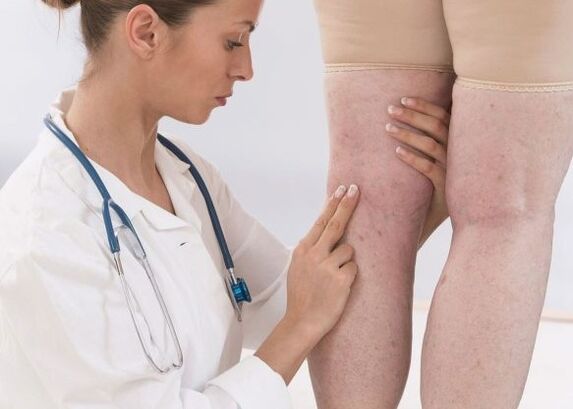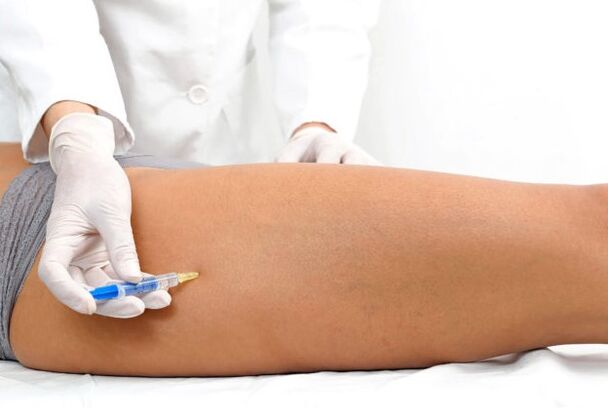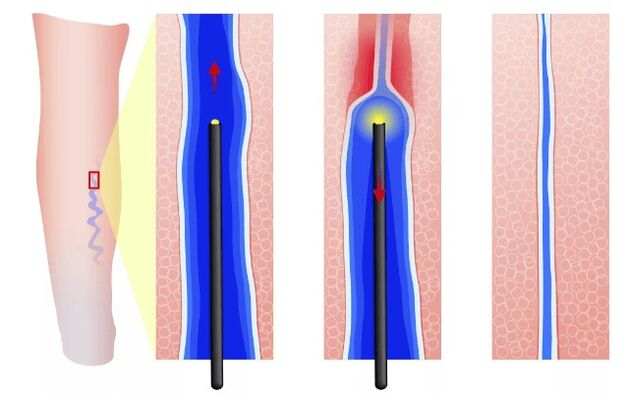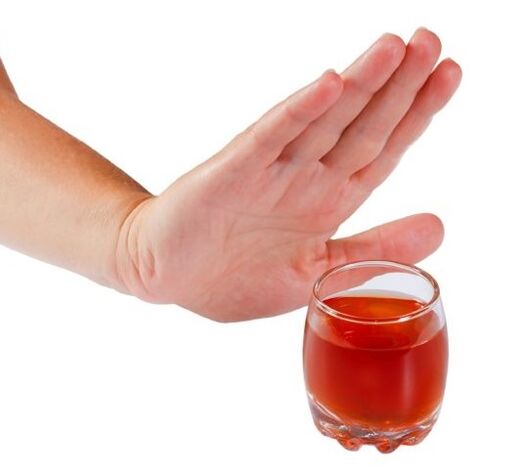The problems with the vascular system of the legs are in more than half of the population of the planet. The greatest discomfort gives patients with a varicose veins phlebologist on their feet. The pathology is characterized by a decrease in the tone of the walls of the blood vessels and the expansion of its light. As a result of the sagging of the foot veins, the reverse blood flow is altered in the human body. What complications are varicose veins and how to fight it correctly, we understand under our material.

General characteristics and causes of varicose veins
The tapas in the operation of the vascular system of the legs are initially formed at the bottom of the inadequate operation of venous valves. Here it is worth knowing that due to the strength of gravity, the blood of the heart flows freely to the lower extremities. In the opposite direction, the bloodstream moves under the influence of natural pressure, which create the walls of healthy vessels. This wave is enough to overcome the power of earthly attraction.
If the tone of the blood vessels is altered, then the body makes all possible efforts to push the blood through the vessels. That is, for this, it increases independently blood pressure (blood pressure). From such "efforts", venous valves work worse, without completely closing their wings with each blow from the human heart. In this case, the blood is actively entered from the deep veins in the superficial, which causes its additional full.
The causes of the varicose veins of the lower extremities are the following factors:
- Inheritance (transmission of the disease through a male or female line).
- Hormonal malfunction in the context of autoimmune processes, pregnancy, childbirth or reproductive system diseases.
- A sedentary type of activity or vice versa, associated with a long leg position.
- A sedentary lifestyle.
- Excess weight (obesity).
- Power exercises with weightlifting of a session or a squat.
- Smoking and drinking alcohol.
- Long stay under the straight rays of the sun.
Symptoms and first signs
The symptoms of the varicose veins may vary in one degree or another of intensity depending on the general condition of the patient and the stage of the disease course. In addition, pathology signs are not always obvious. The only common feature for varicose veins is a condition called the term "heavy legs. "That is, in any of the stages of the pathology, the patient feels the severity in the legs at the end of the working day or even in the morning after the dream.
Stage I and II of the varicose veins: signs and symptoms
The initial stages of the vascular pathology of the legs are characterized by peculiar signs. Then, in 1 stage, the following symptoms are observed:
- a vascular pattern in the form of stars or flicker on the legs;
- leg swelling after wearing shoes and even socks;
- Night cramps in the calf muscle;
- Fatigue and heaviness on the legs.
In 2 stages of pathology, the patient forms the following symptoms:
- Swelling of the veins after prolonged walking with uncomfortable shoes or after a prolonged position;
- Visualization of expanded vessels in the volume of vessels;
- outstanding and outstanding nodes in the veins of the legs;
- itching in places of inflamed veins;
- skin redness.
Stage III and IV of the varicose veins
Progressive varicose veins are already characterized by signs of complications. The image is seen as follows:

- Stage 3. In the background of the patient's previous symptoms, he accompanies the almost constant swelling of the legs. Sometimes you can fall in the morning.
- Stage 4. The patient in skin redness begins with the beginning of the ulcer formations. The place of the future trophic ulcer is covered with whitish, as if with a lacquered plate. During its lesion, a trophic ulcer is opened, which oozes almost constantly. The situation is dangerous because ulcers can be infected for the second time, this leads to the suppuration of inflammation sites.
When to see a doctor and what
In the first symptoms of the initial stages of the varicose veins, you must communicate with a phlebologist. This doctor is dedicated to blood vessels. If there is no such doctor in your clinic, you can get a consultation with an angiosurg or simply a surgeon. It should be understood that in the initial stages to stop the process of developing varicose veins with conservative methods it is quite possible. The competent tactics of the treatment and fulfillment of all the doctor's recipes will allow you to feel the lightness in the legs again.
Diagnosis
For the competent and effective treatment of varicose veins in the legs, an accurate diagnosis must initially make. That is, identify the degree of vascular problem. For the diagnosis of pathology of the veins in the legs, the following methods are used:
- Visual examination of the patient's legs with mandatory palpation of visible vessels.
- Dopplerometry or ultrasonic flotation, which allow the doctor to estimate the speed of blood in the vessels and the total occupation of the foot veins.
- Leg vessel scan. It also allows you to evaluate the status of the valve system and the veins themselves.
- ThermographyIn this case, infrared radiation is used for diagnosis.
- ECOSCLERAPIA. The essence of the methodology is the introduction of a sclerosing substance in small doses and a more detailed examination of the vessels for inflamed places.
- Flebography is a computer. The technique has the standard MRI principle.
- Fleboscintigraphy. Here, experts use special radionucleids to study the lymphatic and venous systems of the legs.
Lower extremities treatment methods
Drug therapy
You can treat varicose veins in the initial stages with drug help. And quite effective. The type and name of the medication are selected depending on the severity of the patient's condition.
For external (local) use, a phlegation can prescribe medications in the form of gels, creams or ointments.
In addition, for oral administration, anticoagulant preparations are prescribed, which successfully dilute blood and avoid the formation of blood clots.
In the context of directed therapy, the patient is prescribed for the treatment of varicose veins that support the work of vascular and circulatory systems. Then, such drugs and additives are shown:
- VitaminsIn particular, vitamin C and Vitamins of Group V.
- The ointments are not anti -inflammatories. Remove the inflammatory process perfectly and reduce skin redness.
- Angioprotectors. Assign to improve the tone of the veins and reduce the permeability of the capillaries.

Surgical treatment of varicose veins with minimally invasive and complete operational methods
At 3-4 stages of varicose veins, surgery is indicated to eliminate patients with vessels interfering with normal blood flow. Depending on the initial state of the patient, one of the minimally invasive techniques or full surgical intervention can be used.
Sclerotherapy
This type of non -surgical procedure consists in the introduction of special scales (phlebosclerosis substances) in veins light. Its base is the alcohols. As a general rule, all these medications are strictly destined for intravenous injection administration. These substances cause the destruction of the general endothelial layer (internal) of the vessel and its greatest narrowing (sclerosis). As a result, the container light is significantly reduced or stuck completely.
Very often, doctors use such drugs:
- Fatty acid and salt soap. These are vaccorcycles, silpisol, sotradikol, thrombovar or varicosano.
- Cellular coming. This is a quinine with Urettan, a solution of 1 to 5 %qualified, viewarl, etc.
- Hypertonic compounds dehydrate the intimacy of the veins. Sodium salicylate solution is 20-40 %, 30 %sodium bromide, 24 %sodium chloride.
- Organic cauterization solutions. Ethyl alcohol, 66 %or dextrose glucose solution.
Combined phlebectomy
Such surgical intervention technique implies the use of several techniques at the same time. But first, the patient in vertical position marks the whereabouts of all the inflamed veins that will be eliminated. The marking is carried out under the control of the ultrasound of the legs of the legs.
With complex phlebectomy, the following stages of surgical intervention are used:
- CROSSECTOMY. Otherwise, the procedure is called a parallel dressing and intersection of the small and/or large subcutaneous vein. The dressing is carried out in the salsa area with deep legs of the legs. The Crossectomy is performed through the cutting cut formed in the inguinal fold area. Its length is 3-5 cm. Then, the surgeon points out a large subcutaneous vein until it falls into the femoral and pulls veins sprouts. The BPV trunk (large subcutaneous vein) crosses. Only your stump remains about 5 mm. Then, from that inguinal section, the surgeon performs the next stage of the operation: dispossession.
- Bare. Or, otherwise, the elimination of the trunks of a large or small subcutaneous vein. It is done through two endoscopic cuts located at both edges of the inflamed vein. In this case, an inguinal cut is already there. Through it, a special probe is introduced in the cavity of a painful vessel, which has a special thick olive with a cutting edge at the end. The probe moves at the end of the inflamed container area and sew it there. Then, the surgeon pulls the sick container, as if he returned out. At the same time, the shear olive cuts the vein of surrounding fabrics and capillaries. This method of removal of the sick vein is the most reliable, but at the same time very traumatic, since the surrounding container of the fabric suffers.
- Liquidation (dressing) of perforating veins. In this case, the surgeon simply unites the perforating veins through small cuts in the skin with a 1-2 cm size.
- Miniflebectomy. The method to eliminate varicose veins (small areas) and varicose nodes through small endoscopic sections. It is done if there is no need to eliminate large or small subcutaneous veins.

Conservative treatment
Diet in the treatment of varicose veins
To increase the tone of the walls of the blood vessels and significantly dilute the blood, it must reconsider its diet. You must reject such products:
- Alcohol in any form
- Fat and smoked dishes,
- Excess grenades,
- Refined fatty oils.
To improve the status of the veins on the legs, you can and should eat such products:
- The onions are in
- Honey,
- grape
- tomatoes,
- Fruits and berries for the season.
An abundant consumption regime is also shown at a speed of 30 ml of water by 1 kg of patient's weight.
Rejection of smoking
It is important to understand that smoking contributes to the formation of blood clots and significantly violates blood coagulation. At the same time, not only blood components, but also the walls of blood vessels suffer. Its elasticity is significantly reduced, which does not play in the hand of a patient with varicose veins. Therefore, in order not to aggravate the situation, it is necessary to abandon the pernicious habit as soon as possible.
Compression underwear (stockings, golfs, stockings)
Compression knitting is one of the effective ways to avoid greater progression of varicose veins. Such linen (golfs, socks and socks) evenly distributes the intensity of the blood flow to the heart. As a result, the load on the walls of the vessels is significantly reduced, and the light of patients with veins is returned to a relatively normal state. It is very important to understand that the compression formula embedded in knit garments repeats exactly the load that calf muscles can form during the intense movement of the legs. That is, blood in the veins of the lower extremities does not stagnate even with a sedentary lifestyle. At the same time, all compression underwear in terms of compression intensity is classified into 4 types:
- Preventive Point Clothes. It has a compression level of 10 to 18 mm Hg. Art. It is indicated to use people with a genetic predisposition to varicose veins.
- The first class of knit garments. The degree of compression in this case is 18 to 22 mm Hg. Art. It is used in the initial stage of varicose veins and for the prevention of varicose veins with improved physical effort with weightlifting or excessive body weight.
- The second class of knitting. Compression level - 23–32 mm Hg. This clothing is indicated for thrombophlebitis or for varicose veins, formed at the bottom of surgery.
- The third class of knitting. The compression here is 33–46 mm Hg. Art. Shown by deep venous thrombosis or after operations.
- Fourth grade. The elastic linen has a degree of compression of 49 mm Hg. Art. This knitwear is used in severe thrombosis or lymphosis to improve lymphatic drainage.

Popular methods to treat varicose veins
If the varicose veins did not give complications and the treatment of pathology is carried out only medications, then it can be used as popular therapy. In addition, you can use compresses and tinctures for oral consumption. Next, consider the most popular variants of popular treatment of varicose veins.
HERBE TATURES AND TINIFES
To use homeopathy, you can use such herbs and plants:
- Chestnut. The tincture is prepared from it. Pour 10 g. Crussed chestnut fruits 100 ml of vodka. All are placed in glass containers and insist for about 10 days in a dark place. The mixture shakes periodically. After the deadline, the agent is a joke and takes 15-20 drops per day before meals (in the morning and night).
- Celandine. A bandage gets moistened in the plant's juice and applied in the form of a compress. The bandage is fixed for 4 hours, then washed with warm water. The course of therapy is a week. After that, take a break for 10 days and repeat the treatment. The complex is three of these courses.
- Fern. Here they take sour milk (3 tablespoons of dining rooms) and dry grass (3 tablespoons of dining rooms). Everything mixes and distributes according to gauze. The bandage applies to the painful leg and fixed with a bandage for three hours. This treatment technique is better used at night before bedtime.
- Manzanilla Pharmacy. A decoction of the plant is made (2 tablespoons of grass are placed on a glass of boiling water). After that, the product is insisted on 30-40 minutes and presses. The finished infusion is used as compress liquid. Chamomile eliminates vascular stars and similar patterns.
Conclusion
It is worth remembering that varicose veins: pathology is irreversible. Therefore, it is now advisable to think about the health of the legs and fundamentally change lifestyle. Remember, the health of your legs depends only on you. Especially if there is a predisposition to the development of pathology.
